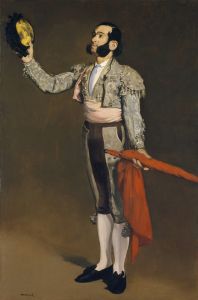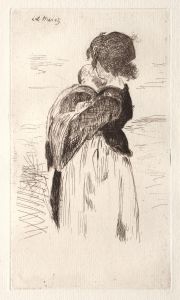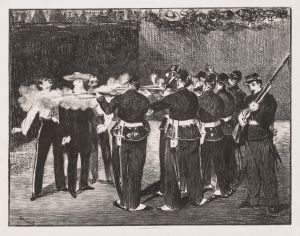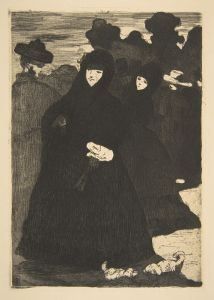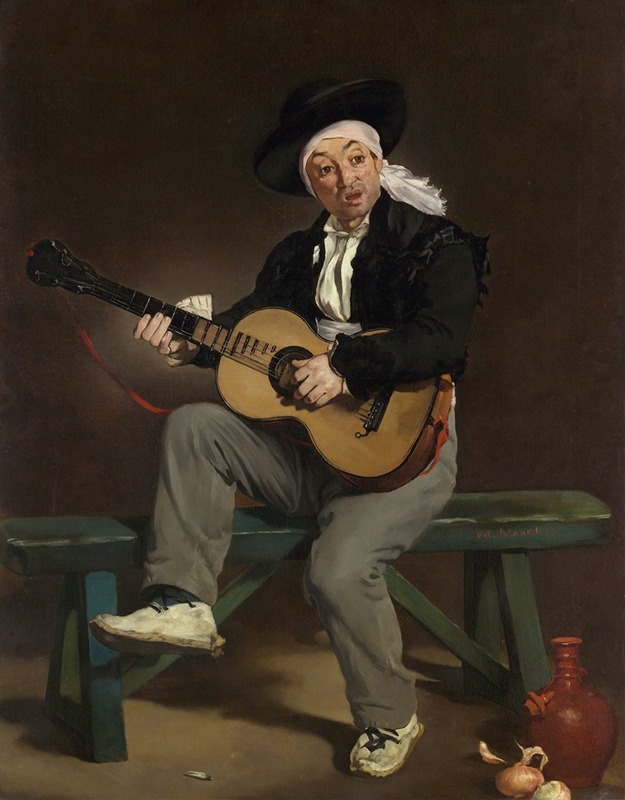
The Spanish Singer
A hand-painted replica of Édouard Manet’s masterpiece The Spanish Singer, meticulously crafted by professional artists to capture the true essence of the original. Each piece is created with museum-quality canvas and rare mineral pigments, carefully painted by experienced artists with delicate brushstrokes and rich, layered colors to perfectly recreate the texture of the original artwork. Unlike machine-printed reproductions, this hand-painted version brings the painting to life, infused with the artist’s emotions and skill in every stroke. Whether for personal collection or home decoration, it instantly elevates the artistic atmosphere of any space.
"The Spanish Singer" is an oil painting created by the French artist Édouard Manet in 1860. This work is one of Manet's early masterpieces and is notable for its vibrant depiction of a Spanish musician, which reflects the artist's interest in Spanish culture and art during this period. The painting is housed in the Metropolitan Museum of Art in New York City, where it remains an important piece within their collection of 19th-century European paintings.
The painting measures 147.3 cm by 114.3 cm and portrays a young man dressed in traditional Spanish attire, seated and playing a guitar. The figure is depicted with a sense of immediacy and liveliness, capturing the viewer's attention through his expressive pose and the vivid colors of his costume. The musician's attire includes a black hat, a white shirt, a red sash, and a patterned vest, which are rendered with bold brushstrokes and a keen attention to detail.
Manet's interest in Spanish themes was influenced by his admiration for Spanish painters such as Diego Velázquez and Francisco Goya. This influence is evident in "The Spanish Singer" through the use of dramatic contrasts of light and shadow, as well as the realistic portrayal of the subject. The painting's composition and the use of color demonstrate Manet's departure from the academic traditions of his time, as he began to develop a more modern approach to painting.
"The Spanish Singer" was exhibited at the Paris Salon of 1861, where it received mixed reviews. While some critics appreciated the painting's boldness and originality, others were less receptive to Manet's unconventional style. Despite the varied reception, the painting marked a significant moment in Manet's career, as it was one of the works that helped establish his reputation as a leading figure in the transition from Realism to Impressionism.
The painting's significance also lies in its reflection of the broader cultural fascination with Spain in 19th-century France. During this time, Spanish music, dance, and art were popular among French audiences, and Manet's work captures this cultural exchange. "The Spanish Singer" is not only a testament to Manet's skill as a painter but also an example of how artists of the period engaged with and were inspired by different cultural influences.
In terms of technique, Manet employed a loose brushwork style that would later become characteristic of the Impressionist movement. The painting's background is relatively simple, which serves to highlight the figure of the musician and his instrument. This focus on the subject, combined with the dynamic use of color and light, contributes to the painting's enduring appeal.
Overall, "The Spanish Singer" is a significant work in Édouard Manet's oeuvre, representing both his early experimentation with style and his engagement with cultural themes. It remains a celebrated piece for its artistic innovation and its role in the evolution of modern art.





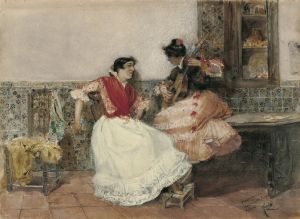
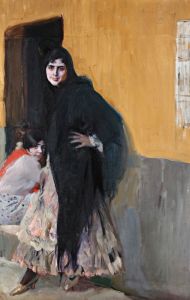

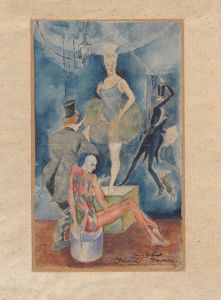


![Designs for promotional material for opera singer Emanuel List.] [Drawing for brochure page](/imgs/249246/s/winold-reiss-designs-for-promotional-material-for-opera-singer-emanuel-list-drawing-for-brochure-page-130d6349.jpg)


